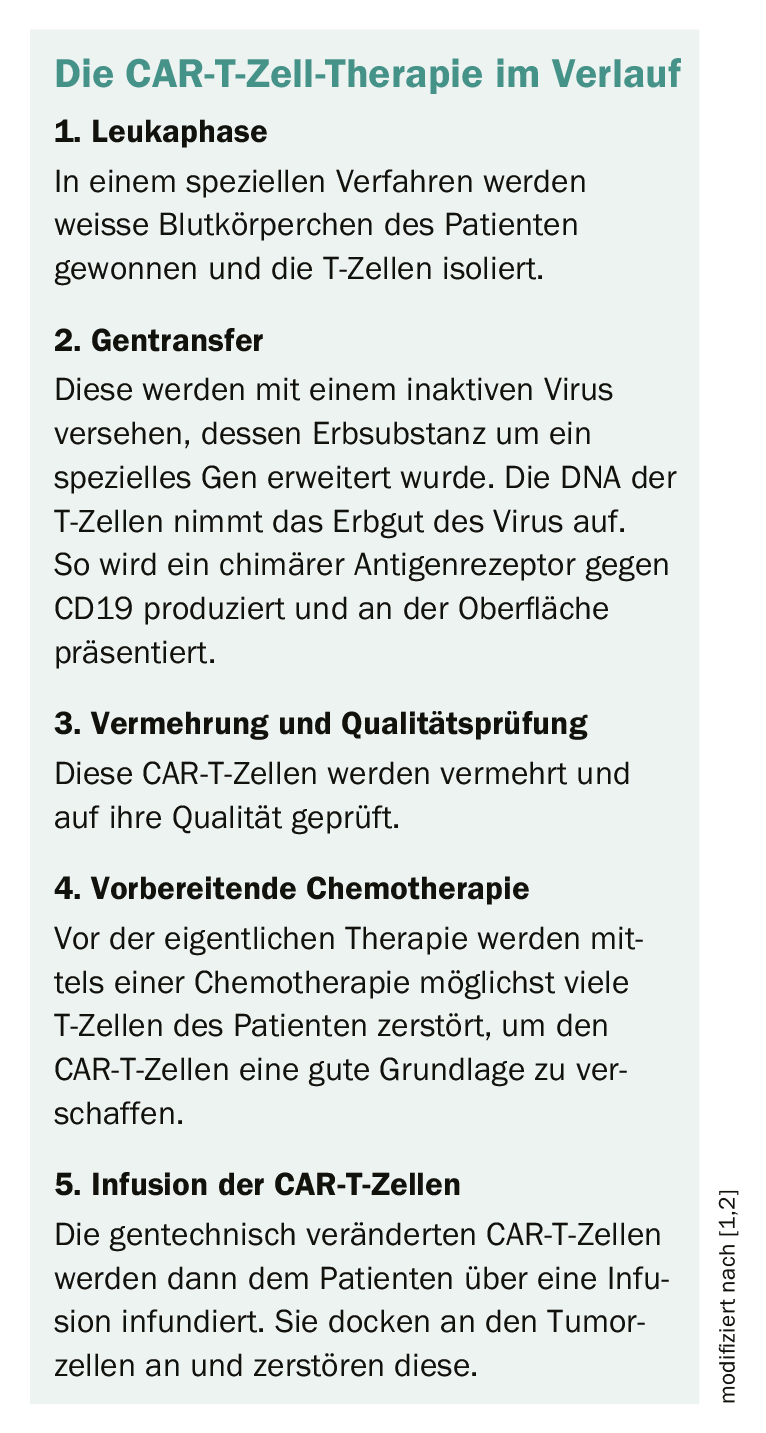CAR-T cells are currently one of the most exciting developments in immunotherapy. It combines immunotherapy, cell therapy and gene therapy and could become a routine treatment in the future.
CAR T-cell therapy was one of the main topics of the congress and was intensively discussed. The experts agreed that it currently represents one of the most exciting developments in hematology. In addition to the scientific development, which is still in its infancy and has not yet been completed with regard to the range of indications, however, it is above all the financing that poses a challenge. The question is how this very cost-intensive therapy can be made accessible to those affected by having it covered by health insurance. Several sessions were held to develop strategies, such as the idea of establishing a registry, to further advance this effective therapy.

Currently, CAR T-cell therapy is mainly used for large cell non-Hodgkin’s lymphoma (B-cell lymphoma). The most common form of non-Hodgkin’s lymphoma accounts for 40% of all cases. But acute lymphoblastic B-cell leukemia (ALL) – at least up to the age of 25 – can also be treated. In Europe, about 80% of all childhood leukemia cases are ALL. The need is therefore great. CAR-T cell treatment combines three innovative forms of therapy – immunotherapy, cell therapy and gene therapy. The aim is to use genetically modified T cells to identify and combat tumor cells as such. Scientists agree that CAR T-cell therapy has the potential to become a routine treatment. This is why the first CAR-T meeting was held in Paris in June. For more detailed information, please visit: www.cartcellnet.org.
24th Congress of the European Hematology Association (EHA) 2019
Sources:
- Abken H: CAR-T cells: How designer immune cells can be armed against cancer. Trillium Immunology 2017; 1: 43-47.
- Tran E, et al: A Milestone for CAR T Cells. New Engl J Med 2017. DOI: 10.1056/NEJMe1714680.
InFo ONCOLOGY & HEMATOLOGY 2019; 7(4): 26 (published 9/20/19, ahead of print).











